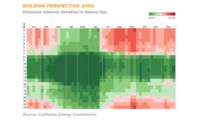While the federal government continues to tangle with Congress over a climate-change law, the California Air Resources Board on Dec. 16 endorsed its own cap-and-trade regulation.
The measure sets a statewide limit on the emissions from sources responsible for 80% of California’s greenhouse-gas emissions and establishes a price signal needed to drive long-term investment in cleaner fuels and the more efficient use of energy, according to CARB. The regulation is designed to provide covered entities with the flexibility to seek out and implement the lowest-cost options to reduce emissions.
The cap-and-trade program also works in concert with standards for cleaner vehicles, low-carbon fuels, renewable electricity and energy efficiency and complements California’s existing efforts to reduce smog-creating, toxic air pollutants, says CARB.
The regulation will cover 360 businesses representing 600 facilities and is divided into two broad phases. Beginning in 2012, the first phase includes major industrial sources and utilities. Starting in 2015, the second phase adds distributors of transportation fuels, natural gas and other fuels.
Companies are not given specific limits but must supply credits (each covering the equivalent of one ton of carbon dioxide) to cover their annual emissions. CARB says that, each year, the total number of allowances issued drops, requiring companies to find the most cost-effective and efficient approaches. By 2020, CARB says, greenhouse- gas emissions will drop 15%, matching the 1990 baseline.
To ensure a gradual transition, CARB says it will provide significant free allowances to all industrial sources during the initial 2012-2014 period. Companies that need additional allowances to cover their emissions can buy them on the market or at regular quarterly auctions that ARB will conduct.

